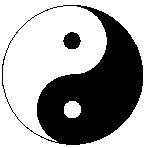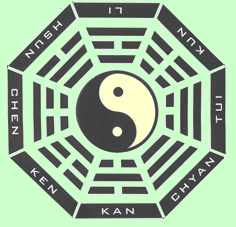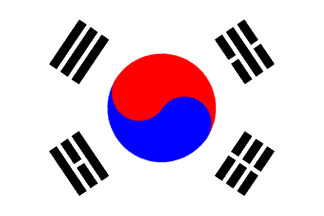

A theory, as understood by scientists, is a design or plan that explains a recognized phenomena of our experience, in a way that happens to be consistent with observations and experimentation, as well as other generally recognized theories, and which successfully predicts the circumstances in which similar phenomena will occur in the future. The more phenomena that are explained via a particular theory, the more ambitious the theory is. Martial Arts systems are kinds of theories, some more ambitious than others. The martial arts that have originated from East Asia such as kung fu, taiji, and karate tend to undertake lofty aims, taking a wholistic approach as they strive to answer larger questions, not only about self-defense, combat tactics, and fighting techniques, but also at least to some degree about wholistic medicine and herbology, mediation for health and emotional therapy, studies of the metaphysical nature of the universe and how it relates to our bodies, minds, and spirits, as well as the nature of energy and force as it manifests in the world around us. In contrast, Western/European martial arts systems such as boxing, wrestling, and fencing are generally modest in their ambitions, as they are focused on their particular realm of combat. Fencers, while highly sophisticated with regard to the subject of footwork, bladework, the physics and geometry of angulation, blade leverage, distance, time, and positioning, and so forth, do not attempt to address subject matter beyond fencing or combat, such as metaphysics or philosophy. Boxing and wrestling, similarly, are known more for their pragmatic approach to the art of pummeling and/or grappling and subduing, respectively, than for metaphysical inquiries about the nature of the universe, etc.
The East Asian martial arts systems are defined herein as those martial arts directly originating from countries such as China, Korea, Okinawa, and Japan are known to have roots in the Shaolin Temple. When it comes to explaining the nature of the universe, the various martial art systems of East Asian origin tend to agree on the concept of yin and yang as a basis. (Another common element shared by such systems is the concept of ch'i (qi) or ki, as central to the notion of energy and force utilized for combat purposes, which would fall under the purview of a separate article.) Yin and Yang, known to the Koreans as Um and Yang, represent the complementary opposite forces in the universe that balance each other and enable each other to exist. Yin, the black portion of the symbol, is generally considered to be the weak, soft, intrinsic, introverted, feminine, mysterious, dark, and negative side, while the Yang represents the strong, hard, extrinsic, extroverted, masculine, unhidden, bright, and positive side. The Chinese classic Yin and Yang symbol is the circle with a white swirl including a black spot and a black swirl including a white spot,such as the one depicted above. The black spot on white represents the notion that there is no absolute Yin--even in utter darkness there is some light, and vice versa with regard to Yang. This symbol is adopted by the Taiji Quan system as its symbol. Shaolin "external" systems such as Northern Shaolin also adopt the Yin and Yang as a symbol related to its art, although are less inclined to identify as closely with it as does the Taiji system.
The Korean Um and Yang symbol, featured centrally on the South Korean flag that contains its national logo known as the Tae Geuk, is a red and blue circle containing a red horn-like crescent swirl shape on top, and a similar blue shape on the bottom, both parts equal in size and taking up half the area of the circle. Notably missing from this representation is the circle-dots of opposite color contained in each swirl. Another element of the South Korean Tae Geuk logo is four Trigrams of the I Ching, namely Heaven, Earth, Fire, and Water, which surround the Um and Yang symbol. Interestingly, these are only four of Eight Trigrams (Ba Gua or Pa Kua) of the Chinese divination classic I Ching, and furthermore, these particular four Trigrams also happen to coincide with the four Aristotelian (read: Ancient and Medieval European) elements of the universe, namely Air, Earth, Fire and Water. This departs oddly from the classical Chinese concept of five universal elements, to wit: Earth, Fire, Water, Wood, and Metal.

Pictured above: Yin and Yang with Ba Gua (Eight Trigrams): Symbol of the I Ching (Yi Jing)(the Book of Changes).

Pictured above: Taegeuk, the symbol on the South Korean national flag (Taegeuk-Gi).
The yin and yang concept first appeared as part of the Chinese philosophy of Taoism, which in turn saw its origins during the Warring States period of ancient China, which ranged approximately from 403 to 221 BC. The yin and yang concept figured heavily in the Chinese divination Classic, the I Ching. The Chan Buddhists, particularly the Chinese Chan Buddhists after the influence of Ta Mo at the Shaolin Temple, went on to borrow various Taoist concepts, including the yin and yang concept, to develop their own metaphysical philosophy and worldview. We know that kung fu sprang out of the Shaolin Temple, and from kung fu, the various progeny including TaijiQuan and various schools of karate, such as Korean Tang Soo Do. Hence it is no wonder that the yin and yang concept retains a strong presence within the Shaolin-derived systems of Northern Shaolin Quan, Taiji Quan, and Tang Soo Do.
However, each of the three systems mentioned apply the yin and yang concept in entirely different ways that result in three different approaches to martial arts and combat technique. These differences may be the result of differences between Taoism and Chan Buddhism, or perhaps the differences in culture and/or history between, for instance, China and Korea.
Taiji Quan
Taiji, particularly the Yang family system thereof, applies the concept of yin and yang to its method of footwork and maintaining balance throughout its continual movement. In Taiji, during the movements of combat as illustrated by its forms, one foot of the practitioner is always the "yang" foot, the foot that bears weight of the body and remains stable, while the other foot is always the "yin" foot, the foot that is empty of weight and is capable of movement. Proper Taiji form dictates maintaining "clear yin and yang", meaning that at all times during movements is there a yin foot and an yang foot, which are never to be confused with each other. However, one foot will transform from yin foot to yang foot as the body's weight is transferred from the other foot, which had previously served as the yang foot.
Two exceptions to the "yin-yang footwork rule" arise, which further illustrate how yin and yang is applied. The primary exception occurs when the practitioner is on only one leg, such as in the "golden rooster stands on one leg" position, the yin and yang relationship between the two feet becomes obsolete, with regard to movement of that weight-bearing foot. In that situation, the weight-bearing foot serves as yin and yang foot simultaneously: specifically, the "clear yin and yang" rule is applied between the heel of the foot versus the balls of the feet, instead of between two feet. Thus, when only one foot is on the ground, the yin and yang are distributed between the heel and the balls of the weight-bearing foot, such that the part of the foot that moves is the yin part of that foot, while the part that acts as the unmoving pivoting point serves as the yang part of the foot. The second exception to the rule applies in the transition from "right golden rooster" position to "snake creeps down" to the right, where the practitioner changes from golden rooster to an an empty stance such that both feet are in contact with the ground, yet the yang foot moves rather than the yin foot in order to change to the "snake creeps down" position. The exception applies even though two feet are touching the ground, because the fact that the previously raised foot has touched the ground is not part of a stance but is itself in the middle of sliding down to the low snake-creeps-down position and thus is not involved in the footwork of maintaining balance. Thus, the lowering foot is considered "not" touching the ground for the purposes of applying the yin-yang footwork rule, even at the point where it is in fact slightly in contact with the ground.
Northern Shaolin
Northern Shaolin footwork does not follow the yin and yang rule of Taiji but instead has its own rules of footwork, particularly the rule that, when changing stances, the foot which is closest to the direction of movement is the foot that turns first, unless it results in an awkward position where the feet are facing opposite directions. However, Northern Shaolin applies yin and yang in the differentiating upper body from lower body. When punching straight and forward in the bow and arrow stance with the cross-hand, the body below the waist is low and locked in the stance, back leg straight and rooted into the ground behind the practitioner, and and the practitioner's spine is erect from pelvis to the top of the head. Except for the spine, which remains erect, the upper body above the waistline is loose, relaxed, and soft like a Taiji practitioner. The shoulders are low and without tension. The waist begins the movement, from which the elbow respond by following a straight line toward the target, allowing the chambered fist to extend, fist-heart facing up. At the moment of impact with the target, the fist bursts through, and tension is allowed, and at the same time the fist torques to a fist-heart down position as the first two knuckles puncture through the target. The non-punching hand simultaneously draws back to act as a counterbalance and torques in the opposite direction as did the punching hand, i.e., beginning fist-heart-down, and ending with fist heart up at the side of the waist.
This application of yin and yang is illustrated in another Northern Shaolin principle, the stance-versus-strike rule. This rule teaches us to form a two-legged stance first before executing a hand-technique from that stance. For example, if a practitioner were to step forward into a bow and arrow stance and launch a straight punch, the practitioner should finish the stance just before executing the punch. They should not happen at the same time, although to an inexperienced bystander the punch and the step might appear to coincide due to the minute time difference. The reason for this principle is that a punch should first be rooted so that it can be backed up with the practitioner's weight. This can only achieved if the stance is completed first.
The exception to this rule occurs when the practitioner seeks to execute a hand technique from a one-legged stance, or a stance that entails 100% weight being borne on one leg only even if the other foot is in contact with the ground. The exception tells us to execute the hand technique at the same time as the one-legged stance is executed. The reason is that there is no benefit of a root from a one-legged stance. Instead, the hand technique must originate its power from the transitional move that preceded the one-legged stance. Often, that transitional move begins with a two-legged stance, which contains "yang" rootedness from which power can be used to support the hand-technique.
Tang Soo Do
Tang Soo Do, a Korean form of karate, takes an even harder, more external approach to applying yin and yang to its techniques. Specifically, the Tang Soo Do practitioner uses yin as a pull, yang as an outward movement such as a strike. The practitioner who intends to punch with the right hand will pull hard with the left fist into the chamber while the right fist shoots out. This punching method seems similar to the Shaolin approach, except for a subtle difference: the Tang Soo Do artist thinks of the "yin and yang" as the relationship between the two hands, as opposed to the Shaolin artist who thinks of yin and yang as the relationship between upper body and lower body. The result is also subtly different. Also, unlike the Shaolin practitioner who turns the waist to begin the punch, the Tang Soo Do artist will shift the hips. There is no distinction between upper versus lower body, since all movement originates in the hips, whether for punching, blocking, or kicking. Hence, even the upper body tends to be tense, especially upon completion of the punch or other technique. Unlike Shaolin practitioners, who will only maintain the tension for the instant of impact and then revert to upper-body softness, the Tang Soo Do artist will practice maintaining the tension, as though to demonstrate crispness and control, until ready to make the next move. Also, since the waist is not involved in the punch, the movement of the hips that begins the movement continues through the yin-pull versus yang-strike relationship of the arms, which counterbalance each other and generate additional support to the outward movement. Consequently, this approach is considerably more hard-external than that of Northern Shaolin.
The three systems discussed above, Taiji Quan, Northern Shaolin, and Tang Soo Do karate, are three different systems, or "theories" of martial arts that rely on the concept of yin and yang as applied to its basic techniques. Their metaphysical approach to envisioning the universe agrees by including the yin and yang concept as a central concept. However, each system applies the yin and yang concept in subtly different ways, resulting in a larger differences between each art that affect the way each system works and how each system feels to the practitioner.